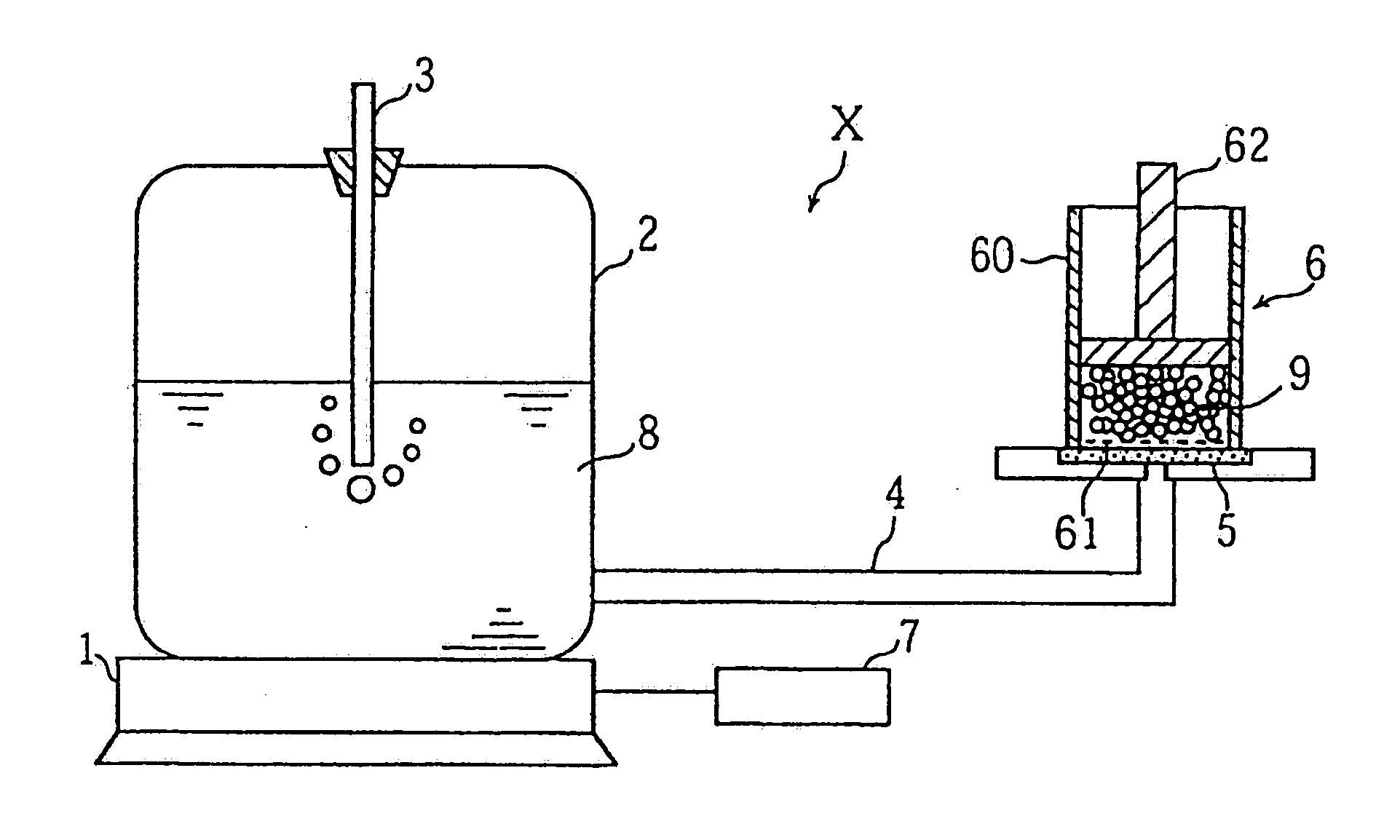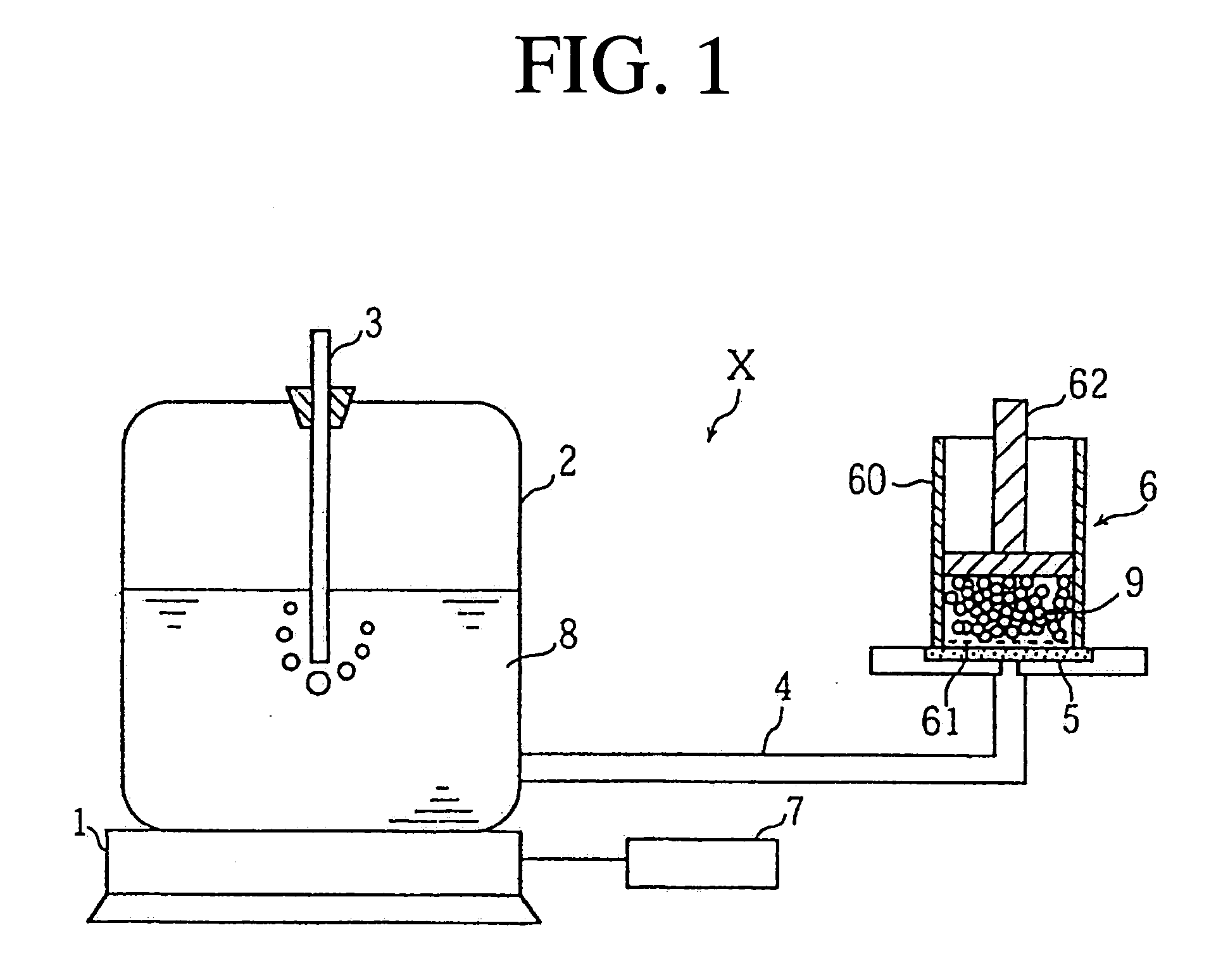Absorbing material and absorptive article using the same
a technology of absorbent and absorbent article, which is applied in the direction of bandages, chemistry apparatus and processes, and other chemical processes, can solve the problems of difficult to absorb, difficult to absorb, and difficult to absorb, and achieve excellent diffusibility and high permeation rate.
- Summary
- Abstract
- Description
- Claims
- Application Information
AI Technical Summary
Benefits of technology
Problems solved by technology
Method used
Image
Examples
preparation example 1
[0071] The amount 340 g of n-heptane and 0.92 g of a sucrose fatty acid ester (manufactured by MITSUBISHI CHEMICAL CORPORATION under the trade name of S-370) were added to a 1000 mL-five-necked cylindrical round bottomed flask equipped with a stirrer, a reflux condenser, a dropping funnel, a thermometer and a nitrogen gas inlet tube. The mixture was dispersed in the flask, and the temperature of the dispersion was raised to dissolve the sucrose fatty acid ester, and thereafter the resulting solution was cooled to 55° C.
[0072] Separately from the above, 92 g (1.02 mole) of an 80% by weight aqueous solution of acrylic acid was added to a 500 mL-Erlenmeyer flask. Thereto was added dropwise 102.2 g (0.76 mole) of a 30% by weight aqueous sodium hydroxide with cooling from external, to neutralize 75% by mole of acrylic acid. Further, 50.2 g of water, 0.11 g (0.41 mole) of a radical polymerization initiator potassium persulfate, and 9.2 mg of an internal crosslinking agent ethylene glycol...
preparation example 2
[0076] The same procedures as in Preparation Example 1 were carried out except that 2,2′-azobis(2-amidinopropane)dihydrochloride (manufactured by Wako Pure Chemical Industries, Ltd. under the product number of V-50) was used in place of the radical polymerization initiator potassium persulfate used in the aqueous monomer solutions for the first-step and second-step polymerizations, and that their amounts used were changed to 0.09 g (0.33 mmole) in the first step and 0.12 g (0.44 mmole) in the second step in Preparation Example 1, to give 212.4 g of a water-absorbent resin (B).
preparation example 3
[0077] The same procedures as in Preparation Example 1 were carried out except that the internal crosslinking agent ethylene glycol diglycidyl ether was not used in the aqueous monomer solution for a first-step polymerization, and that the amount of the internal crosslinking agent ethylene glycol diglycidyl ether used in the aqueous monomer solution for a second-step polymerization was changed from 35.7 mg to 11.9 mg in Preparation Example 1, to give 214.5 g of a water-absorbent resin (C).
PUM
| Property | Measurement | Unit |
|---|---|---|
| pressure | aaaaa | aaaaa |
| pressure | aaaaa | aaaaa |
| vortex time | aaaaa | aaaaa |
Abstract
Description
Claims
Application Information
 Login to View More
Login to View More - R&D
- Intellectual Property
- Life Sciences
- Materials
- Tech Scout
- Unparalleled Data Quality
- Higher Quality Content
- 60% Fewer Hallucinations
Browse by: Latest US Patents, China's latest patents, Technical Efficacy Thesaurus, Application Domain, Technology Topic, Popular Technical Reports.
© 2025 PatSnap. All rights reserved.Legal|Privacy policy|Modern Slavery Act Transparency Statement|Sitemap|About US| Contact US: help@patsnap.com


